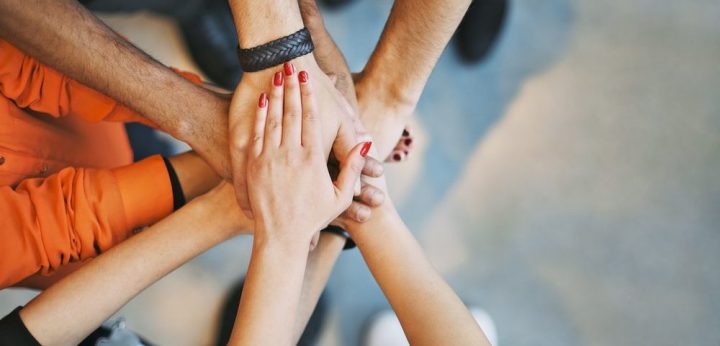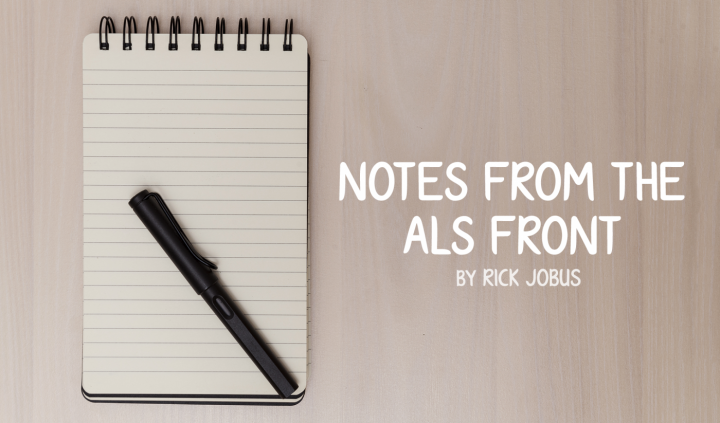In Terms of Care Support, It Takes an ‘ALS Village’

“It takes a village to raise a child.”
That African proverb is a testimony to the primary, secondary, and even cameo influences that factor into the sustaining, nurturing, and ennobling of a human from infancy until independent adulthood. When done properly, a gradual lessening of the “villages’” inhabitants, culture, and support structure occurs until an individual’s autonomy is attained.
Likewise, it requires a communal effort to assure that a modicum of quality of life is afforded the ALS sufferer post-diagnosis. Except, the model for us is reversed. We begin with autonomy, followed by an ever-increasing reliance on others that often is not gradual, and eventually, we become totally dependent. But our proverbial town is not preexisting. It must be assembled to fulfill our needs for medical care, safety, emotional support, caretaking, assistive devices, and financial resources. Much like Lego kits sans instructions or a template, the components most beneficial are not always readily apparent, and may even appear seemingly obscure and irrelevant.
Even anticipating your needs is sketchy, since ALS progression varies significantly from person to person. Suffice it to say, as a study concluded, “medical costs are substantial and increase rapidly and substantially with each disability milestone.” That research showed a monthly average of $4,551 in healthcare expense alone. A separate study followed a single patient for 10 years and showed his cumulative, out-of-pocket, ALS-related spending was $126,161 from 2001-2010. A later and broader Canadian study determined that the patient-family burden is $19,574 annually.
How does one proceed? Familiarizing yourself with all the resources available to help keep you afloat is a prudent first step. A multitude of support groups, advocacy organizations, and national, state, and local philanthropic agencies exist to advise, direct, and support you. Keep an open mind and vigilant eye out for new contributors as the landscape changes. Remedies may spring from unlikely sources.
Admittedly, from there, it’s a good bit of trial and error. What entities are immediate begetters of comfort? Which ones have future potential, to be followed up with at a future date? What are the blind, dead-end alleys? When in doubt, ask. Like a cold-call telemarketer, become immune to being told “no” and have a strategy to transform “no” into “not now.” The application of deductive reasoning and persistence will enable a customized, safe haven to emerge.
Of course, there are obvious puzzle elements to position first. The ALS and Muscular Dystrophy associations are superb, broad-brush assistance providers. Both sponsor regional multidisciplinary clinics, coordinate support groups, and manage assistive equipment loan inventories. Some chapters of the ALSA even offer small care-assist grants to help defray patient expenses.
Helpful as they are, neither is a content expert in all matters of ALS care, and in some cases, they may offer only a parochial perspective. That’s to be expected. The reality is that given the heterogeneous nature of the ALS experience, one size can never fit all. With that in mind, it behooves each of us to become our own most knowledgeable, and loudest, patient advocate. Becoming an expert in all aspects of your personal care plan is wise. Your alternatives, the associated expense, cost-sharing options, and, if pertinent, the regulatory terrain should become your domain. When necessary, prepare yourself to be the “systems’” pain-in-the-ass.
The approach described above has, for me, yielded some fortuitous, sometimes unexpected, results.
In the face of nearly unanimous opinion that it was impossible, I was able to secure, uninterrupted, seven-days-a-week, Medicare-covered, adjunct home aide care. This occurred after a deep dive into the website of the Center for Medicare Advocacy.
Through the help of Team Gleason, I acquired an eye-tracking, speech-generating device at no out-of-pocket expense.
Once I turned 60, I became eligible for generously subsidized services through the local Area Agency on Aging. After my repeated prodding, they agreed to prioritize my application review. Subsequently, I began receiving assistance with home-delivered meals, supply replenishment, personal care, and periodic pest control.
After canvassing the nearby area, I identified a paraplegic man who, as a service to the disabled, located and retrieved wheelchair vans in the Southeast United States. Through him, I acquired one for 35 percent less than the local “discount” vendors were offering. A similar effort yielded a state-of-the-art, indefinitely loaned, transfer lift provided by a durable medical equipment supplier.
Upon learning of the anecdotal benefit that Nuedexta (dextromethorphan and quinidine) had on the swallowing and speech of some folks with ALS, I began a search for a doctor willing to write an off-label prescription. After a dozen inquiries in vain, I finally found one amenable to my logic.
Additionally, due diligence netted me two Roho cushions, an EMS unit, a spare ankle-foot orthosis, acupuncture needles, reiki treatments, and various herbs and teas. All free of charge.
I owe much to my village.
***
Following are other helpful links:
- A.L.S. Family Charitable Foundation
- ALS Foundation for Life
- ALS Guardian Angels
- ALS Worldwide
- Assistive Context Aware Toolkit
- Brigance Brigade Foundation
- CCALS
- Family Caregiver Alliance
- International Alliance of ALS/MND Associations
- Other Financial Help
- Voice for Joanie
***
Note: ALS News Today is strictly a news and information website about the disease. It does not provide medical advice, diagnosis, or treatment. This content is not intended to be a substitute for professional medical advice, diagnosis, or treatment. Always seek the advice of your physician or other qualified health provider with any questions you may have regarding a medical condition. Never disregard professional medical advice or delay in seeking it because of something you have read on this website. The opinions expressed in this column are not those of ALS News Today or its parent company, Bionews Services, and are intended to spark discussion about issues pertaining to ALS.








Stegen Koen
lieve mensen het functioneren van ons lichaam bestaat uit 3 pijlers:
Voeding +-1kg, water+-2L en lucht 15kg per dag.
uit niets kan ook niets ontstaan.
daar de long inhoud daalt bij ALS patiënten is het onvermijdelijk dat de spieren minder zuurstof krijgen en dit is net de belangrijkste voeding voor spieren.
40% van ultra-fijnstof deeltjes in de woning zijn 0.1 micron en deze passeren onze neus en keelhaartjes en gaan de longen als het ware verstoppen waardoor deze minder zuurstof doorgeven aan het bloed.
door aan lucht zuivering te doen gaan ALS patiënten enorme levens kwaliteiten bij krijgen en dat is het belangrijkste.
enkel lucht zuivering van 99.9999% tot 0.1 micron kan dat.
Dave Reckonin
Fantastic article from Rick.
All those human-based support systems.
Human altruism at its finest.
No need to waste time on praying to God & Son Inc and wasting valuable breath.